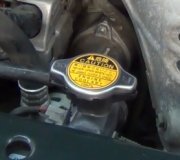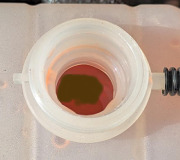You need a new friend! First of all, antifreeze doesn't hold as many BTUs of heat so it can't transfer that heat to the radiator as fast as necessary. Overheating can easily result, especially at highway speed and / or summer heat.
Second, there's an unusual relationship with the freeze point. Water freezes at 32 degrees. Antifreeze freezes somewhere around 10 degrees, or minus ten degrees. It's when you mix them together that the freeze point goes down to as low as minus 55 degrees. At that point it doesn't freeze solid. It becomes mush that can still be made to circulate and warm up.
Most float-type freeze point testers measure the weight of the coolant compared to the weight of straight water. Since antifreeze is heavier than water, straight antifreeze will APPEAR to be good for beyond minus 70 degrees. That is not accurate. Once you get past a 50 / 50 mixture of water and antifreeze, those float testers are useless. You would need a "spectrometer' type of tester where you put a drop of coolant in a window and look through it for a magic line that shows the freeze point.
SPONSORED LINKS
Sunday, January 15th, 2012 AT 5:35 AM




